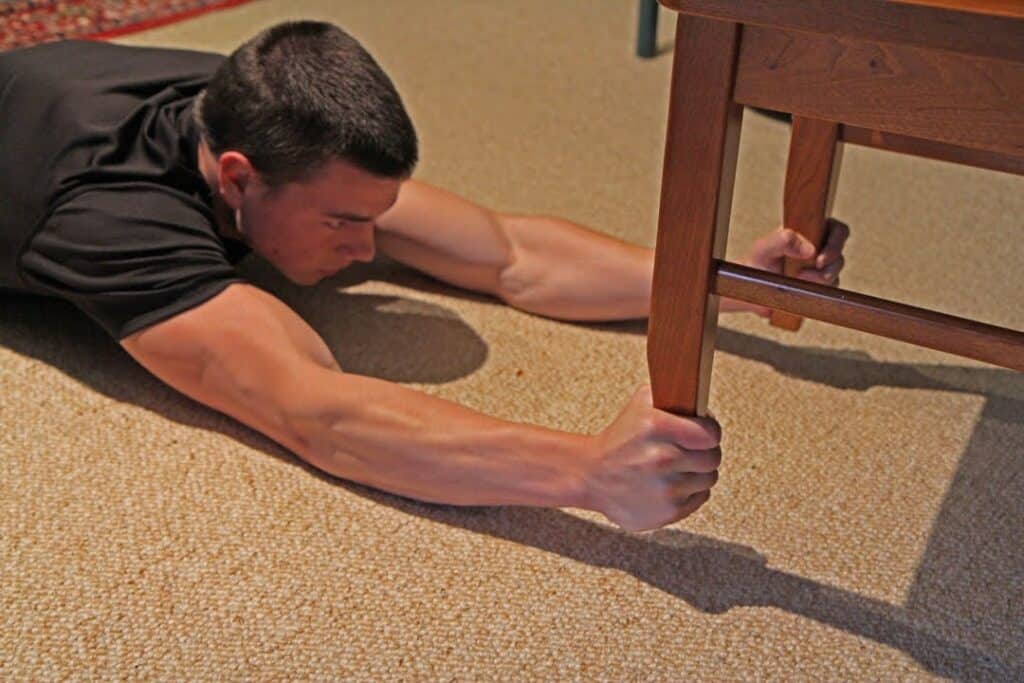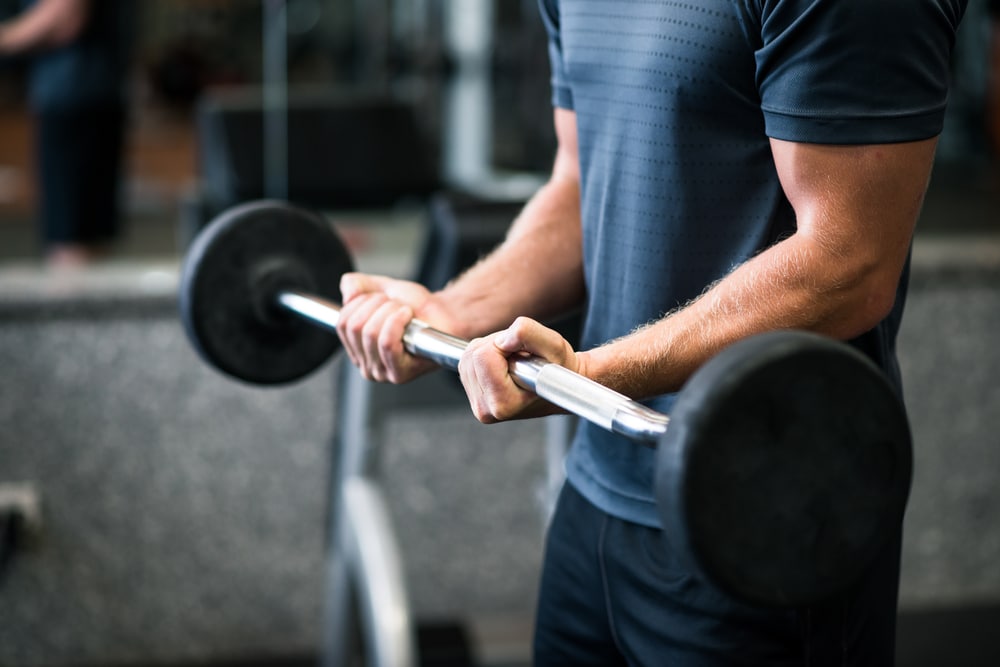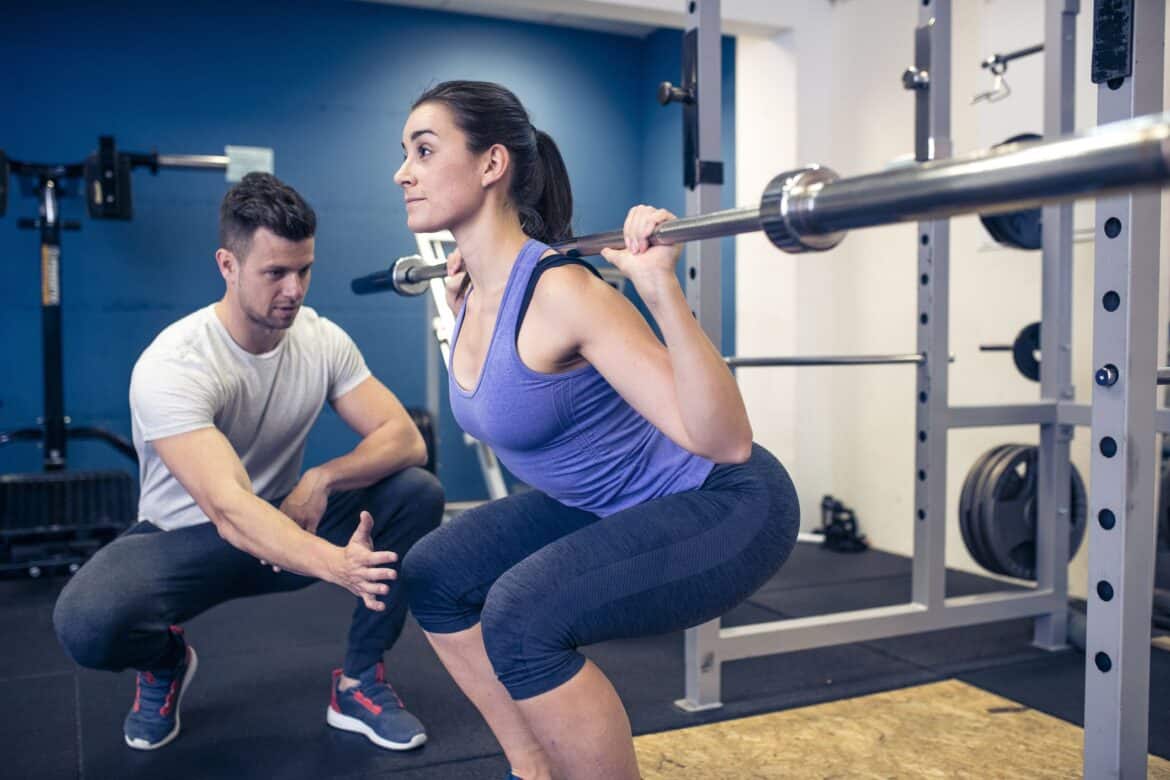Introduction
How To Train Grip Strength At Home: In the quest for overall physical strength and functionality, grip strength often takes a backseat despite being a crucial element of functional fitness. From lifting objects to performing everyday tasks, a strong grip can enhance not only your physical capabilities but also your overall quality of life. The good news is that you don’t need a fancy gym or elaborate equipment to train your grip strength – you can do it right in the comfort of your own home. Whether you’re an athlete looking to boost your performance or simply seeking to improve your everyday activities, this guide will walk you through effective and accessible methods to train your grip strength hypertrophy at home. By incorporating these techniques into your routine, you’ll not only develop a powerful grip but also reap the benefits of improved hand and forearm strength that extend beyond the gym. So, let’s embark on a journey to transform your grip and elevate your physical prowess, all within the confines of your home environment.
In the realm of physical fitness, the importance of grip strength is often underestimated, yet it serves as a fundamental pillar of functional prowess. From opening jars and carrying groceries to excelling in various sports, a robust grip can significantly impact your overall capabilities. The great news is that cultivating grip strength doesn’t necessitate advanced gym equipment or costly memberships – it’s a pursuit that can be accomplished right within the walls of your own home. Whether you’re an athlete aiming to enhance performance or an individual seeking to fortify your daily undertakings, this comprehensive guide is tailored to unveil effective techniques for training grip strength in a home setting.
Amidst the convenience of home-based training, you’ll discover a realm of creative yet practical approaches that target not only your grip but also your forearm and hand muscles. We’ll delve into DIY grip-enhancing equipment, leverage bodyweight exercises, and explore isometric training methods that require minimal space and resources. By integrating these strategies into your routine, you’ll not only nurture your grip strength but also unlock a cascade of advantages, including improved wrist stability and hand dexterity. So, if you’re ready to embark on a journey of empowerment, where ordinary household items become tools of transformation, join us as we unveil the art and science of training grip strength within the confines of your humble abode. Your journey to a mightier grip and elevated physical aptitude starts here – at home.

How can a beginner improve grip strength?
Additionally, exercises such as squeezing putty or tennis balls can enhance grip strength. Additionally, grappling sports such as judo and wrestling can increase grip strength. Or, a physiotherapist may ask the patient to squeeze their hands to identify any differences or weaknesses between the left and right hands.
Start with Bodyweight Exercises
Begin by incorporating bodyweight exercises that engage your hand and forearm muscles. Push-ups, planks, and mountain climbers require you to support your body weight with your hands, gradually building strength in your grip.
Finger Flexor Training
Squeeze a soft stress ball or a tennis ball in your hand, focusing on squeezing with your fingers. Hold the squeeze for a few seconds and then release. Repeat this exercise for multiple sets. This simple exercise targets the muscles responsible for finger flexion and hand grip.
Wrist Curls
Hold a light dumbbell in your hand with an overhand grip. Rest your forearm on a table or your thigh, letting your wrist hang off the edge. Slowly curl the weight up by flexing your wrist, and then lower it back down. This exercise strengthens the muscles in your forearms that control wrist movement.
Can you increase hand grip strength?
Performing pinching weight plates is a great exercise to improve hand grip strength. As the name suggests, what you’ll be doing is grasping weight plates between your thumb and index fingers. All you need are a couple of weight plates and a pinch grip to perform this exercise.
Incorporate exercises specifically designed to enhance grip strength. These include squeezing exercises like stress ball squeezes, plate pinches, and gripper tools. Additionally, exercises like wrist curls, farmers’ walks, and towel pull-ups challenge the muscles responsible for grip.
Just like other forms of strength training, grip strength benefits from progressive overload. Gradually increase the resistance or intensity of your exercises over time to keep challenging your muscles and promoting growth.
Isometric exercises involve holding a position without movement. Incorporating isometric holds, such as holding onto a bar or weight for an extended period, can significantly improve your grip strength.
As you embark on your journey to increase hand grip strength, remember that the benefits extend beyond the physical. Enhanced grip strength can lead to improved hand coordination, increased wrist stability, and better overall functional fitness. From your daily activities to your athletic pursuits, you’ll find yourself equipped with a newfound capability that reflects dedication and hard work.
Why is my grip so weak?
In most cases, waning grip strength is a result of aging or a condition such as carpal tunnel syndrome. However, sudden muscle weakness can be a sign of a medical emergency if it’s due to a stroke. Strokes can cause abrupt muscle weakness, loss of facial movement, trouble speaking, dizziness, and mental confusion.
Sedentary Lifestyle
A lack of physical activity can lead to weakened muscles throughout the body, including those responsible for grip strength. If you spend a significant amount of time sitting or engage in minimal physical activity, your grip muscles might not receive the stimulation they need to stay strong.
Lack of Specific Training
Just like any other muscle group, the muscles involved in grip strength require targeted training to develop and maintain their strength. If you haven’t engaged in grip-specific exercises or activities, your grip strength may lag behind other muscle groups.
Nutritional Deficiencies
A balanced diet is crucial for muscle health. Nutritional deficiencies, particularly in vitamins and minerals like vitamin D, calcium, and magnesium, can contribute to weakened muscles, including those responsible for grip.
Does handgrip increase veins?
Hand grippers do indeed play a role in developing vascularity, but not without a little help from our good friend, science. You see, when you use hand grippers to work your forearm muscles, you’re also increasing blood flow to those areas. As your muscles grow and blood flow increases, your veins become more visible.
The relationship between hand grip training and the visibility of veins is a topic that often piques curiosity. It’s true that some individuals who engage in regular hand grip exercises may notice an increase in vein visibility over time, but the exact mechanism behind this phenomenon requires a closer look.
When you perform hand grip exercises, you engage the muscles of your hands, forearms, and wrists. This muscular engagement triggers increased blood flow to the area. As your muscles contract and relax during exercises like squeezing a stress ball or performing wrist curls, they create a demand for oxygen and nutrients delivered by the bloodstream.
The increased blood flow, along with the repetitive muscle contractions, can cause the veins in the region to dilate and become more prominent. This phenomenon is often referred to as “vascularity” – the visible appearance of veins under the skin.
Is it OK to use hand grippers everyday?
To build hand strength and muscle mass, you should use hand grips for at least 24 hours for two weeks. You need to use hand grips at least 2 hours a day in a day. You should use the hand grips regularly for at least six months to see visible changes.
Muscle Recovery
Muscles need time to recover and rebuild after intense exercise. Using hand grippers every day without allowing adequate recovery could lead to overtraining and hinder progress.
Muscle Imbalances
Focusing exclusively on grip strength without balancing it with exercises targeting other muscle groups can lead to muscle imbalances. It’s important to have a well-rounded workout routine.
Connective Tissues
Repetitive use of hand grippers without proper rest can place strain on tendons, ligaments, and joints in the hand and forearm.
Gradual Progression
Progression is crucial for building strength. Using hand grippers every day might not allow you to progressively increase resistance, which is essential for growth.
Do hand grippers work?
Yes, and here’s why. Just as you would use weights or machines for resistance to strengthen large muscles of the body, such as the glutes and lats, grip strengtheners provide resistance to strengthen the smaller muscles of the hands.
Understanding Hand Grippers
Hand grippers are handheld tools designed to help you train and develop the muscles of your hands, fingers, and forearms. They work by providing resistance when you squeeze them together. This squeezing action engages muscles responsible for finger flexion and forearm rotation, which are crucial components of grip strength.
The Science of Grip Strength
Grip strength plays a vital role in daily activities, sports performance, and overall functional fitness. Strong grip can enhance your ability to lift objects, improve hand coordination, and even impact the performance of upper body exercises like pull-ups and deadlifts.
Effectiveness of Hand Grippers
Hand grippers can indeed be effective for improving grip strength when used appropriately. However, their effectiveness depends on several factors:
Consistency: Like any fitness regimen, consistent training is key. Incorporating hand gripper exercises into your routine a few times a week over an extended period can yield positive results.
Progressive Overload: To continue seeing improvements, you’ll need to progressively increase the resistance level of the hand gripper as your grip strength improves. This principle of progressive overload ensures that your muscles are consistently challenged.
How do you test grip strength?
Grip strength is usually measured using a hand-held dynamometer. The patient squeezes the dynamometer with all of their strength, typically three times with each hand. An average score is then calculated using the measurements from both hands.
A handheld dynamometer is a device specifically designed to measure grip strength. It typically consists of a handle with an adjustable knob to set the handle gap according to your hand size. To use it, grip the handle as firmly as possible and squeeze for a few seconds while the device measures the force exerted.
Similar to the handheld dynamometer, a hand grip dynamometer is a specialized device with a grip handle and a built-in mechanism to measure the force applied while squeezing the handle. The reading on the device provides an accurate measure of your grip strength.
Spring-loaded hand grippers are commonly used to train grip strength, but they can also serve as a testing tool. Choose a gripper with a resistance level suitable for your strength. Squeeze the gripper for a set amount of time and repetitions, noting the level of resistance you can comfortably handle.
Does hand gripper affect height?
The results of this study, showed that anthropometric parameters like weight, height were positively correlated with hand grip muscle strength and height positively correlated with muscle endurance.
The majority of your height is determined by genetic factors inherited from your parents. These genetic factors play a significant role in determining your growth potential, bone structure, and overall height. While factors like nutrition and overall health can influence your growth during childhood and adolescence, they typically have limited impact on your final adult height.
Using hand grippers to improve grip strength does not have a direct impact on your height. Hand grippers target the muscles of the hands, fingers, and forearms, primarily engaging the muscles responsible for grip strength. This localized exercise does not affect the growth plates or the long bones that determine your height.
Height is largely determined by the growth plates, also known as epiphyseal plates, located at the ends of long bones. During growth, these plates contribute to the elongation of bones. Once growth plates close, typically during late adolescence, further bone growth ceases, and your height stabilizes.

Conclusion
In the realm of fitness, where strength is a cornerstone of our physical capabilities, grip strength often remains an underappreciated gem. Yet, the journey we’ve embarked upon to train grip strength at home has illuminated its significance in every facet of our lives. From the mundane tasks that pepper our days to the athletic pursuits that push our boundaries, a powerful grip stands as a testament to our resilience and determination. Everyday items, creativity, and determination have been your allies in this endeavor. The methods explored – from improvised grip trainers to bodyweight exercises and isometric holds – offer a diverse toolkit to nurture your grip strength right in the familiar embrace of your home.
Beyond the physical transformations, the journey to a mightier grip is a metaphor for pushing limits, embracing challenges, and emerging stronger. Your hands, once ordinary tools, have become vessels of strength, dexterity, and newfound ability. The lessons learned in training grip strength transcend the physical; they embody dedication, patience, and the profound realization that transformation is within your grasp. So, as you continue your path toward greater strength and functionality, carry with you the knowledge that your grip is no longer just a part of you; it’s a testament to your journey and your unyielding commitment to self-improvement. From the door handles you turn to the weights you lift, your grip will remind you that even within the comforts of home, remarkable growth is attainable. In the intimate realm of our homes, we’ve uncovered a treasure trove of possibilities to enhance our grip strength – a journey that has been both empowering and enlightening.
As we bring our exploration to a close, the significance of grip strength in our daily lives stands brilliantly illuminated. It’s not just about the strength to hold on; it’s about the power to seize opportunities, to grasp life’s challenges, and to elevate our physical capabilities to new heights. Our venture into home-based grip training has highlighted the ingenuity that resides within us. From household objects ingeniously transformed into training tools to the disciplined pursuit of isometric exercises, each technique has fostered a deep connection between mind and muscle. Beyond the satisfying sensation of a firm handshake, the training of grip strength has imparted invaluable life lessons: resilience, adaptability, and the rewards of consistent effort.

